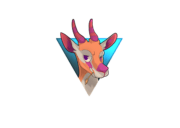Based on data from the PYPL Popularity of Programming Languages 2025 and the TIOBE Index for January 2025, two of the most authoritative reports in circulation, we can have a detailed view of the most used and demanded languages in the global and Italian markets.
- Python
- Description: Known for its simple and readable syntax, making it ideal for beginners but equally powerful for experienced developers.
- Main features: Supports multiple paradigms, including object-oriented and functional programming. Has a vast library of modules making it suitable for numerous projects, from data science to web development.
- Main uses: Primarily used in data science, machine learning, artificial intelligence, and web development with frameworks like Django and Flask.
- Popularity: Python continues to dominate the rankings, remaining first in the PYPL Popularity Index. It’s the most searched language in 2025 thanks to its versatility.
- JavaScript
- Description: The most used scripting language for interactive web application development. Essential for both front-end (client-side) and back-end (with Node.js).
- Main features: Supports asynchronous programming, making it ideal for scalable and reactive applications. Frameworks like React and Vue.js make it particularly useful for modern applications.
- Main uses: The primary language for web development, used to create interactive and responsive user experiences.
- Popularity: According to TIOBE Index and PYPL, JavaScript remains among the most used programming languages in 2025, being the heart of modern and optimized web applications.
- Java
- Description: An object-oriented language that ensures portability and robustness, used for decades in the technology landscape.
- Main features: Known for its cross-platform compatibility, making it ideal for complex enterprise applications.
- Main uses: Used in enterprise applications, banking systems, and Android application development.
- Popularity: Java maintains a solid position in TIOBE and PYPL rankings, remaining a predominant choice in business applications.
- TypeScript
- Description: A JavaScript superset that introduces static typing, improving code management and maintenance.
- Main features: Supports strict typing, which helps prevent errors during complex web application development.
- Main uses: Used to develop scalable web applications, particularly appreciated in teams working on large codebases.
- Popularity: TypeScript is gaining ground, as evidenced by its growing use in PYPL and TIOBE rankings.
- PHP
- Description: A server-side scripting language primarily used for dynamic web development and content management in websites.
- Main features: Highly compatible with various databases and frameworks, particularly known for its simplicity in HTML integration.
- Main uses: Used for dynamic web development and is the foundation of platforms like WordPress, Drupal, and Joomla.
- Popularity: PHP continues to be one of the most used programming languages, albeit with declining popularity compared to JavaScript and Python.
- C#
- Description: A language developed by Microsoft, primarily used with the .NET framework.
- Main features: Very versatile, supporting desktop application, game, and web software development.
- Main uses: Windows application development, game development with Unity, and web applications with ASP.NET.
- Popularity: C# is one of the most popular languages, with a solid position in TIOBE’s global rankings.
- Rust
- Description: A low-level language that emphasizes memory safety and concurrency.
- Main features: Designed to prevent memory errors without compromising performance, ideal for high-performance applications.
- Main uses: Used in systems development, high-performance software, and embedded systems.
- Popularity: Rust is the most loved language according to the Stack Overflow Developer Survey and continues to grow in popularity in 2025.
- Go (Golang)
- Description: A language developed by Google, known for its simplicity and ability to easily handle concurrency.
- Main features: Go is designed to efficiently handle distributed applications and scalable systems.
- Main uses: Microservices development, cloud applications, and distributed systems.
- Popularity: Go is highly appreciated in the cloud applications sector, as evidenced by its growing use in the TIOBE Index.
- Kotlin
- Description: Fully interoperable with Java and primarily used for Android application development.
- Main features: Kotlin is modern, concise, and safe, with syntax that simplifies development compared to Java.
- Main uses: Android app development and server-side applications.
- Popularity: Kotlin is gaining popularity in the Android landscape and also in back-end development.
- Swift
- Description: The primary language for developing applications for Apple devices.
- Main features: Swift is safe, powerful, and modern, designed for speed and efficiency.
- Main uses: Development of apps for iOS, macOS, watchOS, and tvOS.
- Popularity: Swift has become essential for development in the Apple ecosystem, replacing Objective-C in many projects.
Conclusions: The most used and in-demand programming languages in 2025 reflect a growing demand for skills in areas such as artificial intelligence, data science, web development, and mobile applications. Languages like Python, JavaScript, and SQL dominate the global market thanks to their versatility and applicability in numerous sectors. However, languages like Rust, Go, and Kotlin are gaining ground for high-performance applications and modern mobile development.
Java and C# continue to be particularly in demand in the enterprise applications sector and in banks and financial institutions, where stability and security are fundamental. The growing adoption of microservices and cloud computing in Italy, especially in large companies, is driving the adoption of languages like Go and Rust, which are appreciated for their efficiency and security in network applications and distributed systems.
Swift and Kotlin are also finding more space in the Italian market, particularly among companies developing applications for iOS and Android, responding to the growing demand for modern and performant mobile solutions.
Overall, while Italian trends reflect global needs, the Italian job market is responding with a strong emphasis on digital skills. The digitization of the public sector, the growth of tech startups, and the expansion of large companies in digital services drive demand for developers with skills in these languages. Those who acquire expertise in languages like Python, JavaScript, and Go will be highly sought after, not only internationally but also in Italy, where digital transformation is now a strategic priority. CopyRetry




